

Odisha, located on the eastern coast of India, is renowned for its ancient temples, classical dance form, and rich cultural traditions. With Bhubaneswar as its capital, Odisha has been a center of art, architecture, and spirituality for centuries. The state is famous for its magnificent temple architecture, particularly the Jagannath Temple in Puri, the Sun Temple in Konark, and the ancient caves of Udayagiri and Khandagiri. From the golden beaches of Puri to the tribal heartlands, Odisha presents a perfect blend of spiritual heritage, natural beauty, and living traditions.
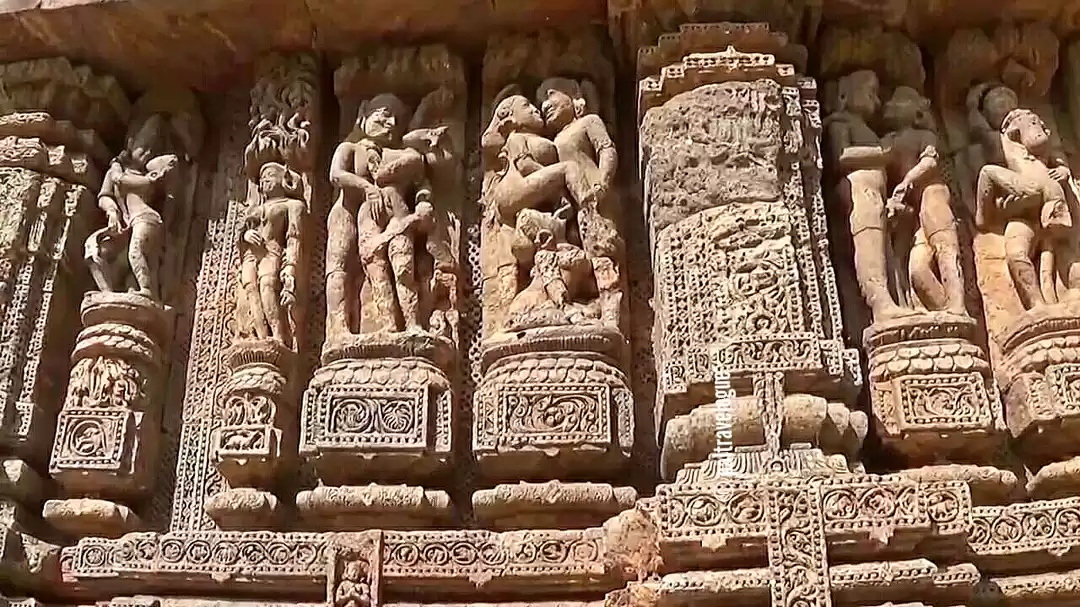
Odisha stands unique in Indian history as the ancient land of Kalinga, with a civilization dating back thousands of years. The region has been a cradle of art, architecture, maritime trade, and spiritual traditions that have significantly influenced the cultural landscape of Eastern India.
The ancient Kalinga kingdom, mentioned in ancient texts like the Mahabharata, was a prosperous maritime power with extensive trade relations with Southeast Asia. The Kalinga style of architecture, characterized by intricate carvings and majestic temple structures, reached its zenith between the 7th and 13th centuries. The famous Kalinga War in 261 BCE, which transformed Emperor Ashoka from a conqueror to a propagator of Buddhism, took place on Odisha's soil, marking a significant turning point in Indian history.
The medieval period saw the rise of powerful dynasties like the Eastern Gangas, who built the magnificent Jagannath Temple in Puri and the Sun Temple in Konark. The worship of Lord Jagannath became the central religious and cultural force in Odisha, creating a unique syncretic tradition that continues to define Odia identity. The Odia language and script developed during this period, with the earliest inscriptions dating back to the 7th century.
Odisha's maritime glory is evidenced by the ancient ports like Palur, Chelitalo, and Dosarene, which connected India with Sri Lanka, Java, Bali, and other Southeast Asian regions. The famous "Sadhaba Pua" tradition of Odia merchants sailing to distant lands is commemorated in folk songs and literature. This maritime connection led to cultural exchanges that influenced art, architecture, and traditions in both Odisha and Southeast Asia.
The modern state of Odisha was formed on April 1, 1936, as the first linguistic state of India, following the movement for a separate province for Odia-speaking people. This was a significant achievement in India's linguistic reorganization and set a precedent for other states.
Today, Odisha takes pride in this unique heritage. The temples of Bhubaneswar, Puri, and Konark represent architectural marvels that attract scholars and tourists from around the world. The state's vibrant culture, characterized by its classical Odissi dance, Pattachitra paintings, and applique work, reflects this rich historical legacy.
Odisha's ancient legacy is not just historical; it's a living tradition that continues to shape the state's identity. From the architecture of its temples to the rhythm of its music and the flavors of its food, this heritage makes Odisha a fascinating example of cultural continuity and spiritual vitality.
Odisha is known for its rich literary heritage, which is reflected in its linguistic landscape. The state's language traditions showcase its unique history as the heartland of Odia culture and classical traditions.
Odia is the official language of Odisha and is spoken by the majority of the population. It belongs to the Indo-Aryan language family and has a rich literary tradition dating back to the 7th century. Odia is known for its sweet, musical quality and is one of the six classical languages of India, recognized for its rich literary heritage.
The languages of Odisha reflect its unique position as the cultural heartland of Odia civilization. While Odia remains the soul of Odia identity, the presence of tribal languages, English, Hindi, and Sanskrit influences creates a rich linguistic tapestry that mirrors the state's history as a meeting point of different cultures and traditions.
Odisha's festivals reflect its deep spiritual traditions, temple culture, and agricultural heritage, creating a cultural calendar that is vibrant, devotional, and deeply rooted in tradition. From grand temple celebrations to tribal festivals, Odisha's events showcase the state's devotional spirit, artistic excellence, and cultural diversity.
Rath Yatra is the most important and widely celebrated festival in Odisha, known for its grand chariot procession of Lord Jagannath, Balabhadra, and Subhadra. This festival attracts millions of devotees from across the world to Puri and is celebrated with unprecedented enthusiasm across the state.
The Rath Yatra festival is more than just a religious celebration; it is the ultimate expression of Odia culture that transcends religious and social boundaries. With its grand chariots, devotional fervor, and community participation, Rath Yatra perfectly embodies Odisha's unique identity as a land where spirituality, art, and community coexist harmoniously.
Durga Puja is celebrated with great enthusiasm across Odisha, particularly in Cuttack and Bhubaneswar. While similar to celebrations in West Bengal, Odisha's Durga Puja has its own unique traditions and artistic expressions.
The festival marks the victory of Goddess Durga over the buffalo demon Mahishasura and is celebrated with elaborate pandals, cultural programs, and community celebrations. In Odisha, the festival has distinct rituals and artistic traditions that reflect the state's cultural identity.

Durga Puja in Odisha is a testament to the state's rich cultural traditions and its celebration of divine feminine power. The rituals and artistic expressions displayed during this festival reflect the artistic spirit of Odia culture and its connection to spiritual traditions.
The Konark Dance Festival is a major cultural event in Odisha that celebrates Indian classical dance forms against the magnificent backdrop of the Sun Temple in Konark. This festival showcases Odisha's contribution to Indian classical arts, particularly Odissi dance.
The Konark Dance Festival represents the rich artistic heritage of Odisha, showcasing classical dance traditions against one of India's architectural marvels. As a festival that highlights Odisha's cultural contributions, it connects modern audiences to classical traditions while providing a platform for artistic excellence.
The festivals of Odisha showcase its unique cultural synthesis, where temple traditions, agricultural cycles, and tribal heritage coexist and often influence each other. This harmonious blend of celebrations reflects the spirit of Odisha - spiritual, artistic, inclusive, and deeply rooted in both religious and cultural traditions.

Odisha, known as the "Soul of India," is a state of ancient temples, rich cultural heritage, and diverse landscapes. From the temple city of Bhubaneswar to the coastal town of Puri, each urban center in Odisha has its own distinct character, contributing to the state's reputation as a land of spirituality, art, and natural beauty.
Bhubaneswar, the capital city of Odisha, is known as the "Temple City of India." Located in the Khurda district, it serves as the administrative, economic, and cultural hub of the state. Bhubaneswar beautifully preserves its ancient heritage while embracing modernity, creating a unique urban experience where centuries-old temples stand alongside modern infrastructure.


The Lingaraj Temple is one of the most impressive and largest temples in Bhubaneswar, dating back to the 11th century. This magnificent structure represents the quintessence of the Kalinga style of architecture and is dedicated to Lord Shiva, worshipped here as Harihara (a combined form of Shiva and Vishnu).

The temple complex spans a vast area and features a 55-meter high main tower (deul) that dominates the skyline. The temple walls are adorned with intricate carvings depicting various deities, mythological scenes, and floral patterns. The sanctum houses a natural lingam that is believed to be self-manifested (swayambhu). The temple tank, Bindu Sagar, located nearby, is considered sacred, and pilgrims take ritual baths in its waters.
The Lingaraj Temple is not just a place of worship but also a living museum of Odisha's temple architecture and religious traditions. Daily rituals, festivals, and religious ceremonies continue to be performed as they have been for centuries. The temple is particularly crowded during Shivaratri and other important festivals when devotees throng to seek blessings.
Today, the Lingaraj Temple represents Bhubaneswar's identity as the Temple City of India. Its architectural grandeur, religious significance, and continuous traditions make it a must-visit destination in Odisha, showcasing the state's deep spiritual roots and architectural excellence.

The Udayagiri and Khandagiri Caves are among the earliest groups of Jain rock-cut shelters in India, dating back to the 2nd-1st century BCE. Located on two adjacent hills, these caves were excavated during the reign of King Kharavela of the Mahameghavahana dynasty and served as residential blocks for Jain monks.
The Udayagiri (Sunrise Hill) has 18 caves while Khandagiri has 15 caves, each with unique architectural features and inscriptions. The most famous among them is the Rani Gumpha (Queen's Cave), which is a double-storied monastery with elaborate carvings and a central courtyard. The Hathi Gumpha (Elephant Cave) contains the famous Hathigumpha inscription, which provides valuable information about King Kharavela's reign.
These caves are not just archaeological sites but also important landmarks in the history of Indian rock-cut architecture. The carvings depict various aspects of contemporary life, religious symbols, and royal activities. The natural setting of the caves, surrounded by lush greenery, adds to their charm and makes them a popular destination for both pilgrims and tourists.
Today, the Udayagiri and Khandagiri Caves represent Odisha's ancient heritage and its contributions to religious tolerance and architectural innovation. They stand as a testament to the state's rich historical legacy and continue to attract visitors interested in history, architecture, and spirituality.
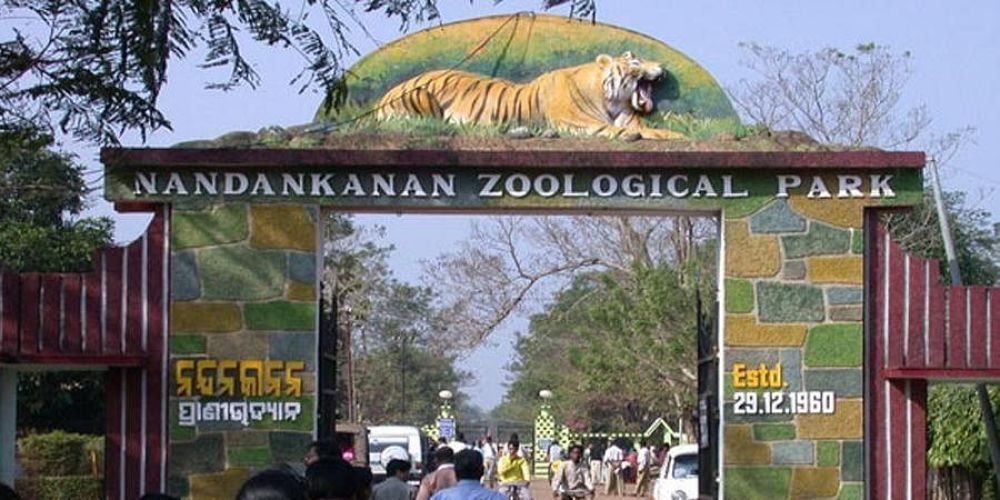
Nandankanan Zoological Park is one of India's premier zoological parks, located on the outskirts of Bhubaneswar. The name "Nandankanan" means "The Garden of Heaven," and the park lives up to its name with its beautiful natural setting, diverse animal collection, and successful conservation programs.
The zoo spans over 400 hectares and features a botanical garden, a zoo, and a sanctuary. It is renowned for its white tiger conservation program and was the first zoo in the world to breed white tigers in captivity. The zoo also houses other rare and endangered species like the Indian pangolin, mouse deer, and various species of crocodiles and turtles.
Nandankanan is not just a recreational space but also an important center for wildlife conservation, research, and education. The zoo's naturalistic enclosures, set amidst dense forests and natural water bodies, provide a near-natural habitat for the animals. The botanical garden section features a wide variety of indigenous and exotic plants, creating a complete ecosystem experience.
In recent years, Nandankanan has gained international recognition for its conservation efforts and animal welfare standards. The park represents Odisha's commitment to environmental conservation and sustainable tourism. It stands as a model for modern zoo management and continues to be a major attraction for both local visitors and tourists.
The Odisha State Museum in Bhubaneswar is a premier institution dedicated to preserving and showcasing the rich cultural heritage of Odisha. Established in 1932 and later moved to its present location in 1960, the museum houses an extensive collection of artifacts that represent Odisha's history, art, and culture.
The museum complex spans several buildings and features multiple galleries dedicated to different subjects. The archaeological section displays artifacts from ancient sites across Odisha, including sculptures, coins, and inscriptions. The palm leaf manuscript section contains rare manuscripts, some dating back centuries, written on palm leaves. The natural history section showcases the state's biodiversity through specimens and dioramas.
Key attractions include the sculpture gallery with magnificent stone and bronze sculptures from various periods of Odisha's history, the tribal gallery showcasing the culture and artifacts of Odisha's diverse tribal communities, and the painting gallery featuring traditional Pattachitra and other Odia art forms. The museum also has collections of weapons, musical instruments, and traditional crafts.
The Odisha State Museum represents Bhubaneswar's position as the cultural capital of Odisha and its commitment to preserving the state's heritage. The museum's collections and research activities contribute to our understanding of Odisha's history and cultural development. It stands as a testament to the state's rich cultural legacy and offers visitors a comprehensive view of Odisha's artistic and historical achievements.
Bhubaneswar embodies the spiritual and cultural soul of Odisha while embracing its role as a modern administrative capital. As the Temple City, it offers architectural marvels, spiritual experiences, and urban amenities while maintaining a unique character. From its ancient temples to its modern institutions, Bhubaneswar is a city that captures the essence of Odia culture and represents the dynamic spirit of Odisha.
Puri, located on the coast of the Bay of Bengal, is known as the "Spiritual Capital of Odisha" and one of the four Dhams (cardinal points) of Hinduism. The city is renowned for the Jagannath Temple and its beautiful beaches, offering a perfect blend of spirituality and natural beauty.
Puri represents the spiritual soul of Odisha, where devotion and tradition create a unique coastal experience. As the Spiritual Capital, it showcases the state's deep religious roots through its temples, rituals, and pilgrimage culture. For visitors seeking spiritual enrichment, Puri offers a profound experience of Odisha's devotional heritage complemented by its natural coastal beauty.
Cuttack, located at the apex of the Mahanadi delta, is known as the "Silver City" of Odisha due to its famous silver filigree work. The city served as the capital of Odisha until 1948 and remains an important commercial, cultural, and educational center.
Cuttack offers a glimpse into the commercial and craft traditions of Odisha, balancing business activity with cultural heritage. As the Silver City, it showcases the state's artistic excellence through its silver filigree work and commercial vitality through its markets and institutions. For visitors interested in Odisha's craft traditions and urban history, Cuttack provides valuable insights into the state's commercial and artistic legacy.
Rourkela, located in northern Odisha, is known as the "Steel City" and represents Odisha's industrial capabilities. The city was developed around the Rourkela Steel Plant and has grown into a major industrial and educational center.
Rourkela represents the industrial strength of Odisha, where manufacturing and technology create economic opportunities. The city's industries, educational institutions, and planned development offer insights into Odisha's industrial heritage and future aspirations. For those interested in India's industrial development, Rourkela provides valuable perspectives on Odisha's role in the nation's economic growth.
Konark, located on the coast of the Bay of Bengal, is known as the "Heritage City" and is famous for the Sun Temple, a UNESCO World Heritage Site. This small town represents Odisha's architectural glory and cultural heritage.
Konark represents the architectural and artistic achievements of Odisha, where stone carving reached its zenith. As the Heritage City, it showcases the state's temple architecture through one of India's most magnificent structures. The town's UNESCO World Heritage Site, cultural events, and coastal location make it an essential destination for understanding Odisha's architectural heritage and artistic contributions.
The cities of Odisha each contribute uniquely to the state's character. Bhubaneswar represents the temple heritage and modern capital, Puri the spiritual traditions, Cuttack the commercial and craft excellence, Rourkela the industrial strength, and Konark the architectural glory. Together, these urban centers showcase the diversity that makes Odisha much more than just a state—they reveal a region with profound spiritual heritage, artistic traditions, industrial capabilities, and architectural marvels that balance tradition with progress. From ancient temples to steel plants, from silver filigree to UNESCO sites, Odisha's cities offer experiences that capture the essence of this culturally rich Indian state.
Odisha food is renowned for its subtle flavors, minimal use of spices, and emphasis on local ingredients. The cuisine reflects the state's geographical diversity, temple traditions, and agricultural heritage. Known for its temple food, particularly the Mahaprasad of Puri, Odia food offers a delightful experience that emphasizes simplicity, nutrition, and traditional cooking methods.
Odia Thali is the quintessential dining experience in Odisha, featuring a complete platter of various dishes that showcase the diversity and simplicity of Odia cuisine. This traditional meal represents the culinary heritage of Odisha in a single sitting, with an emphasis on balanced nutrition and subtle flavors.
Odia Thali is more than just a meal; it's a cultural experience that embodies the essence of Odia hospitality and culinary wisdom. Its balanced arrangement and subtle flavors have evolved over centuries, making it the heart of Odia dining culture.
Pakhala is a signature Odia dish that exemplifies the state's love for simple, comforting food. This fermented rice dish is a staple in Odia households, especially during summer, and is known for its cooling properties and digestive benefits.
Pakhala is a perfect example of Odisha's culinary identity, where simple rice is transformed into a cooling and nutritious dish. Its subtle fermentation and simple preparation tell the story of Odisha's climate and its ability to create distinctive food from basic ingredients.
Chhena Poda is Odisha's most famous sweet, known and loved throughout the state. This baked cheese dessert with a caramelized top represents the sweet side of Odia cuisine and is a source of great pride for the state.
Chhena Poda is more than just a sweet; it's an icon of Odia culture that embodies the state's sweet-making expertise. Its perfect caramelization and delightful taste represent the care and tradition that goes into Odia cooking, making it a fitting conclusion to any Odia meal and a sweet representation of Odisha's culinary heritage.
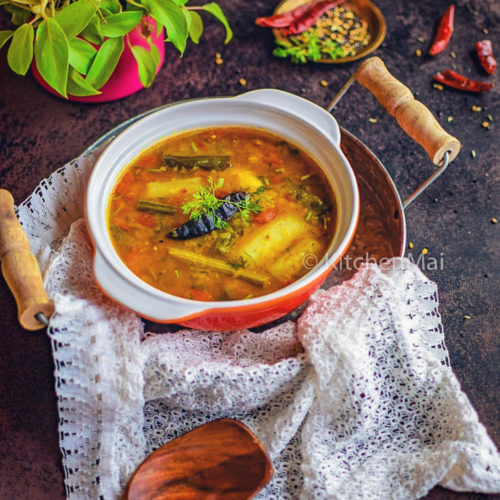
Lentil and vegetable stew, a classic Odia dish.

Prawn curry with minimal spices, highlighting fresh flavors.
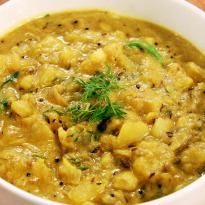
Light vegetable stew with minimal seasoning.

Fried chhena patties soaked in sweetened milk, a temple sweet.
Odisha cuisine is a vibrant tapestry woven from indigenous Odia traditions and temple influences, with additional touches from geographical features that have shaped the region's food culture over centuries. From the comforting simplicity of Pakhala to the iconic sweetness of Chhena Poda, Odia food tells the story of a people who have mastered the art of creating satisfying meals with minimal ingredients. Each dish is not just nourishment but a celebration of Odisha's unique cultural identity and its position as a land of temples, agricultural abundance, and culinary wisdom.
Odisha fashion is a vibrant reflection of its temple culture, tribal heritage, and artistic traditions. From traditional attire that tells stories of temple rituals to contemporary styles influenced by global trends, Odia clothing represents a unique blend of elegance, simplicity, and cultural identity. The fashion scene in Odisha beautifully balances tradition with modernity, creating a distinctive style that is both sophisticated and comfortable.
Did you know? Odisha fashion is heavily influenced by its temple traditions and tribal heritage, with traditional attire often featuring ikat patterns and temple-inspired designs that reflect Odia aesthetic sensibilities, complemented by the practical clothing needs of its diverse communities.
Traditional Odisha men's attire reflects the state's temple heritage combined with practical needs. From formal occasions to everyday wear, these garments showcase a unique cultural identity that has evolved through Odisha's historical periods.
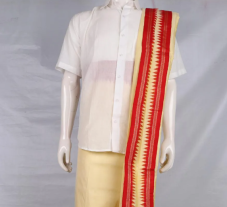
Traditional Odisha men's fashion represents the harmonious blend of indigenous traditions and practical needs. The retention of traditional elements while adapting to modern life creates a unique sartorial identity that distinguishes Odias from other Indian communities.
Odisha women's traditional attire is a beautiful representation of cultural elegance and artistic expression. The clothing reflects both the aesthetic sensibilities of temple culture and the practical requirements of daily life in different regions of the state.


Women's fashion in Odisha tells a story of cultural preservation and artistic expression. The distinct styles showcase how Odia aesthetics evolved through temple traditions and craft innovations. The traditional attire reflects Odisha's artistic heritage, while contemporary adaptations acknowledge modern urban life.
Odisha textiles reflect the state's artistic heritage, cultural diversity, and craft traditions. The fabrics used in traditional clothing prioritize comfort, elegance, and suitability for the region's climate.
The textile traditions of Odisha have evolved significantly over centuries. Ancient textiles were primarily simple cottons. During the medieval period, intricate weaving techniques developed, particularly ikat. The modern period has seen a revival of traditional techniques alongside contemporary innovations, with Odisha's handlooms gaining national and international recognition.
Contemporary Odisha fashion represents a dynamic blend of traditional elements with global influences, heavily shaped by urban culture, education, and the state's artistic traditions. The modern Odia wardrobe seamlessly transitions from traditional attire for festivals to contemporary styles for daily wear.
Simple cotton garments suited for the tropical climate.
Development of intricate weaving techniques and temple-inspired designs.
Blending of Odia and Western fashion elements.
Revival of traditional textiles in contemporary fashion with global influences.
Odisha has produced several fashion designers who have gained recognition for their work that often incorporates Odia cultural elements.
Odisha fashion is a dynamic and evolving expression of the state's unique cultural identity. Rooted in temple traditions and craft heritage, it represents a harmonious blend of simplicity and sophistication. From the traditional ikat sarees of Odia women to the elegant dhotis of men, Odia clothing tells a story of cultural continuity, artistic expression, and pride in heritage.
As Odisha continues to navigate the intersection of tradition and modernity, its fashion scene remains a vibrant reflection of this balance. The growing recognition of Odisha's textiles and designers suggests an exciting future where traditional elements will continue to influence fashion trends while adapting to contemporary sensibilities.
Future Trends: The next decade will likely see increased emphasis on sustainable practices, technological integration in textile production, and further innovation in fusion wear that respects traditional craftsmanship while embracing global fashion currents.